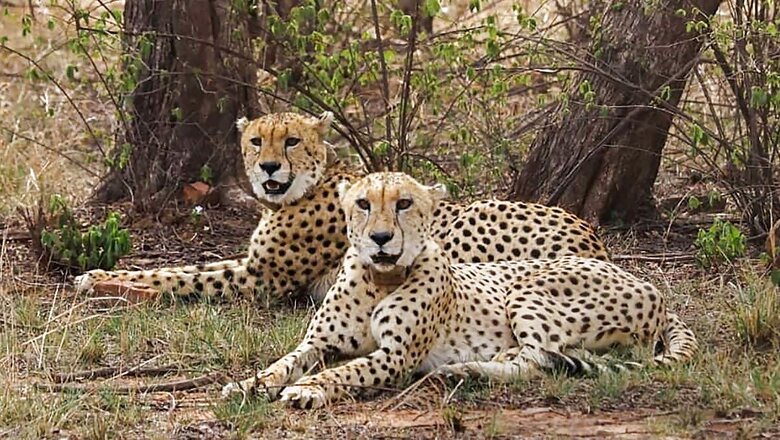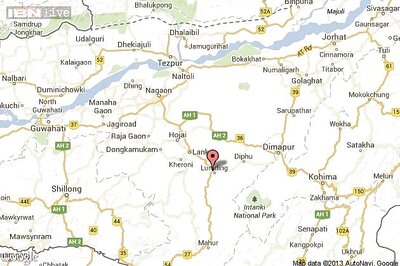
views
Desperate to increase their chances of survival, the wild cats have been hauled up in large enclosures since July 2023 where they have been captive-bred — contrary to the Cheetah Action Plan which aimed at establishing ‘a free-ranging cheetah population that reproduces in the wild’. The fenced ‘predator-proof’ enclosures are large, but not ‘large-enough’ for the world’s fastest land animal which can sprint more than 110 km/hour in just three seconds.
By far, the animals have spent more time in captivity than in the wild since their historic translocation.
“Promises, assurances and more announcements. In August 2023, we were told that the captured cheetahs would be released by October-November 2023. Some were released in December 2023 but almost all of them were re-captured within days or weeks. Now we are told that once the monsoon withdraws fully, the cats will be released. Based on global experience and Namibian laws and policies, it is not a good idea to release these cheetahs because of their extremely long period of captivity, especially the captive-born cubs,” says senior wildlife biologist and conservation scientist Ravi Chellam.
IS IT A ZOO OR A CONSERVATION EXERCISE?
The Cheetah Steering Committee formed by the government assures that the felines have been hunting on their own. However, the prey population ie cheetal has been timely supplemented by forest staff. The felines are largely protected from leopards, which will be their biggest enemies in the wild. Over the course of last year, they have also been captive-bred — producing 12 cubs which are yet to hone their hunting skills.
“Have we brought these cheetahs to keep them captive? Is that the goal of the re-introduction exercise?” Dr MK Ranjitsinh, veteran wildlife conservationist who also played a crucial role in cheetah reintroduction earlier, asked News18. Several wildlife experts and scientists across India have continued to express their dismay over the world’s biggest wildlife experiment, comparing their current conditions to “almost like a Zoo”.
The longer the animals remain in captivity, the more debilitated they will become. The forest department has remained ‘too cautious’ after seven of the 20 cheetahs died within the first year. “It was unnecessary to keep them confined for so long. The mortality was expected. We had to be bold,” says a senior wildlife scientist, pointing out that the Cheetah Action Plan had already expected 50 per cent mortality.
EYES ON THE WORLD’S BIGGEST WILDLIFE EXPERIMENT
The authorities were unwilling to take any chances after seven cheetahs died within the first year, including three in the monsoons alone. But now their impending release has raised more worries.
Studies in Africa show that the release of captive-bred/captive-raised large carnivores can be ‘difficult and challenging’ as the animals show poor survival post-release due to their lack of the full suite of natural behaviours.
“We have to release the cheetahs after rains. The weather is not as hot and humid as it was. We will consult the weather department and after the monsoons end, the cheetahs will be freed. They are fully vaccinated and will also be radio-collared before release,” said Rajesh Gopal, chairman of the Cheetah Project Steering Committee which has given its go-ahead for the much-awaited freedom of the captive animals.
Madhya Pradesh Forest department officials confirmed that the final timeline for release is yet to be worked out, and is still in the discussion stage. The female cheetahs and their cubs will not be released, as the cubs are still less than a year old.
The animals were pitched to be an ‘emblem’ of wildlife conservation in India and help improve livelihood opportunities for local communities in the remote land of Kuno, but 24 months and counting, it seems we are still clueless on what to do with the ‘imported’ cheetahs.

















Comments
0 comment